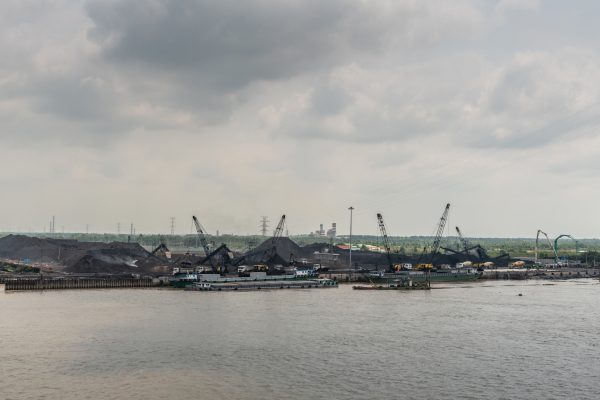Late last year, Vietnam became one of a few countries to sign a Just Energy Transition Partnership (JETP) with the International Partners Group (IPG), comprised of the European Union, United Kingdom, United States, Japan, Germany, France, Italy, Canada, Denmark, and Norway. The multi-billion-dollar agreement is an essential step towards the Communist Party of Vietnam (CPV)’s goal of achieving net zero carbon emissions by 2050. Still, despite initiatives like JETP, Vietnam needs significantly more investment to meet this ambitious goal, which also requires reforms to its regulatory process.
Carbon emissions disproportionately impact Vietnam. The World Bank has ranked it as one of the five countries most likely to be affected by climate change as rising sea levels and extreme heat put the areas along its 3,200-kilometer coast at risk. Already we are seeing the impact on Vietnam’s economy: according to the World Bank’s initial calculations, climate change-related costs trimmed Vietnam’s GDP by 3.2 percent in 2020. When projecting to 2050, it predicts a reduction of 12 to 14.5 percent of its GDP.
Despite these risks, Vietnam has notably increased its carbon emissions. In 1991, Vietnam’s carbon emission in tons was 21.38 million; in 2019, this number jumped to 341 million.
Largely this increase has come from the country’s escalating dependence on coal. Coal currently makes up about half of Vietnam’s energy portfolio, with hydropower comprising 30 percent, followed by natural gas (14 percent), and non-hydropower renewables (5 percent). Overall, Vietnam used 53.53 million tons of coal in 2021, an increase from 38.77 million tons in 2015.
Vietnam’s reliance on coal is a supply and demand problem resulting from its phenomenal economic growth and the increased energy consumption necessary to maintain that growth. Vietnam’s economy reached a pivot point when the CPV embarked on market-oriented economic reforms (Doi Moi) in 1986. The results were staggering; in 1985, the overall GDP of Vietnam was $14.09 billion; by 2021, it increased to $366.14 billion. Vietnam has emerged from the COVID-19 pandemic with continued strong economic growth and notable investments in its manufacturing sector. As a result, the Ministry of Industry and Trade predicted in 2018 that energy demand would increase annually by 8 percent until 2030.
JETP is essential if Vietnam is to increase renewable energy sources to meet this demand. At least initially, it played a role in Vietnam’s reduced coal use projections. When setting its energy goals for 2030 at the most recent G-7 meeting, the government plan increased its coal use from its current 24 gigawatts (GW) of installed capacity to 36 GW in 2030 and envisioned the construction of 11 new coal-fired power plants. Yet, after the IPG announced JETP, Vietnam reduced its projected coal use peak to 30 GW in 2030 and said that it would source 47 percent of its energy from renewables by the same year.
Nevertheless, Vietnam requires more investment if it is to achieve net zero carbon emissions within the timeframe envisioned by the government. In 2022, the consulting group McKinsey released a report that estimated Vietnam would require an annual $30 billion investment to meet the 2050 net zero emissions goal, an amount equivalent to about 10 percent of its current GDP. Current funding comes overwhelmingly from domestic sources: 58 percent of renewable energy projects are developed by Vietnamese companies, and only 12 percent were developed without a Vietnamese partner.
This long-term hurdle comes on top of unpredictable short-term shocks that impact Vietnam’s ability to invest in renewable energy. Take the recent credit crunch, which threatened the country’s credit-dependent renewable industry, or Russia’s invasion of Ukraine, which heavily influenced energy markets and prices. Moreover, despite its relative success withstanding the consequences of the global pandemic, the CPV has had to divert resources from renewable investment.
To reach net zero by 2050, the CPV must attract foreign investment, which requires reforms to its cumbersome regulatory structure. For example, its Power Purchase Agreement puts the majority of the risk on those developing renewable energy projects. It prohibits these developers from directly providing energy to businesses while also lacking a “take or pay” obligation, government guarantee, or procedural recourse. As a positive development, the Ministry of Industry and Trade recently announced a Direct Power Purchase Agreement pilot program that will allow businesses to purchase a limited amount of electricity directly from developers.
Equally problematic is the fact that the Vietnamese government doesn’t do enough to incentivize investment on the front end. In 2018, the government introduced a successful feed-in tariff program for projects built before November 2021 (later extended to 2023). The program’s success was evident in the tens of billions of dollars of investment it incentivized. Since its expiration, the Ministry proposed a transition to an auction-based process that a Mayer Brown report predicts will decrease the internal rate of returns for developers by 10 to 11 percent.
Overall, Vietnam has taken important steps to reduce its reliance on fossil fuels, including joining JETP. Still, Vietnam needs significant foreign funding to meet these ambitious goals, necessitating regulatory reforms to incentivize foreign investment.


